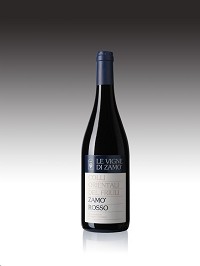| The Zamo family always loved wine and in 1924 they opened an osteria at Manzano. The new venture was run by Luigi, Tullios father and Pierluigi and Silvanos grandfather. But the real adventure began when Tullio Zamo acquired five hectares of vineyards on the slopes of Rocca Bernarda, one of the zones acknowledged as the historic heartland of premium-quality wines in Friuli. The ABBAZIA DI ROSAZZO label, which still belongs to the Zamo family, was born with the recovery of the vineyards the family then rented from the Archiepiscopal Curia of Udine. After the success of wines like RONCO DEI ROSETI, which with the 1988 vintage was the first Friulian red wine to win the much-coveted Three Glass award of the Gambero Rosso/Slow Food Italian Wines Guide, Tullio Zamo sought the collaboration of an internationally famous oenologist, Franco Bernabei, and acquired five hectares of vineyards on the hills at Ronchi di Buttrio. During these years, the estates reputation grew as Three Glasses were awarded to RONCO DEI ROSETI again for the 1992 and 1994 vintages. Tullio and his sons Pierluigi and Silvano did not wish to squander the experience and ideas they had acquired over years of managing the vineyards at Abbazia di Rosazzo. They purchased 15 hectares under vine in the Rosazzo subzone, opposite the Abbey itself. In this period, the family rented the oldest and best-aspected vineyards in Rosazzo, building up a total of 35 hectares under vine, while also completing restoration of the old farmhouse at Rosazzo and of the offices and the estates new hospitality centre. In 1999, work on the new cellar began and ended. With the aid of the most modern technology, the Zamo family continued to make wine with the utmost respect for the painstaking attention lavished on the vineyards. In 2001, a further two hectares on the hillsides at Rosazzo were purchased. Vineyard preparation work started the same year and was completed in 2004. Since the site enjoys a superb location, and in view of the soil type at Rosazzo, it was decided to plant the two varieties that best represent the estate Tocai Friulano and Pignolo. Clones were taken from our oldest vineyards. |




 0
0


